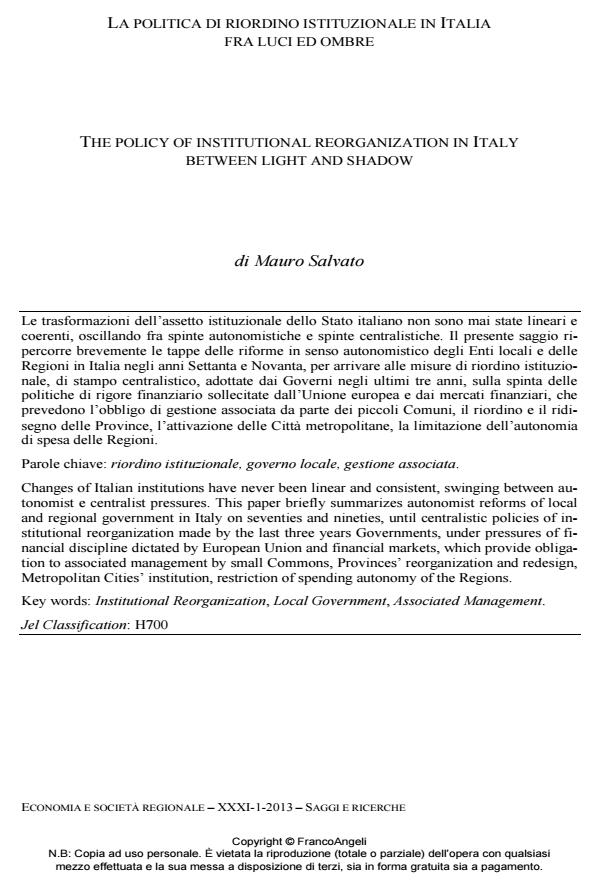The policy of institutional reorganization in Italy between light and shadow
Journal title ECONOMIA E SOCIETÀ REGIONALE
Author/s Mauro Salvato
Publishing Year 2013 Issue 2013/1
Language Italian Pages 23 P. 108-130 File size 306 KB
DOI 10.3280/ES2013-001007
DOI is like a bar code for intellectual property: to have more infomation
click here
Below, you can see the article first page
If you want to buy this article in PDF format, you can do it, following the instructions to buy download credits

FrancoAngeli is member of Publishers International Linking Association, Inc (PILA), a not-for-profit association which run the CrossRef service enabling links to and from online scholarly content.
The ECB suggests that hourly nominal wages should increase in line with real hourly labour productivity, and not exceed it. The "vicious" countries which do not follow this rule loose progressively competitiveness. This is the "rule of lead" for income distribution, contrasting with the "role of gold" that leaves unchanged the labour share on national income. The "rule of lead" means domestic competitive devaluation, against workers and labour income, and income distribution with even more inequality. The ECB suggests also to go ahead with structural reform, to start with more deregulation of labour market: more market flexibility and less protections in the job for more protection in the market. But the ECB seems suffer from myopia: it sees out of focus medium and long-run factors (innovation) that really make the difference, and focus mainly on short-run factors (labour market flexibility) which however do not positively affect competitiveness and productivity recovery.
Keywords: Employment Protection, Nominal and Real Wages, Productivity and Income Distribution
Jel codes: J33, J24, J52
Mauro Salvato, La politica di riordino istituzionale in Italia fra luci ed ombre in "ECONOMIA E SOCIETÀ REGIONALE " 1/2013, pp 108-130, DOI: 10.3280/ES2013-001007